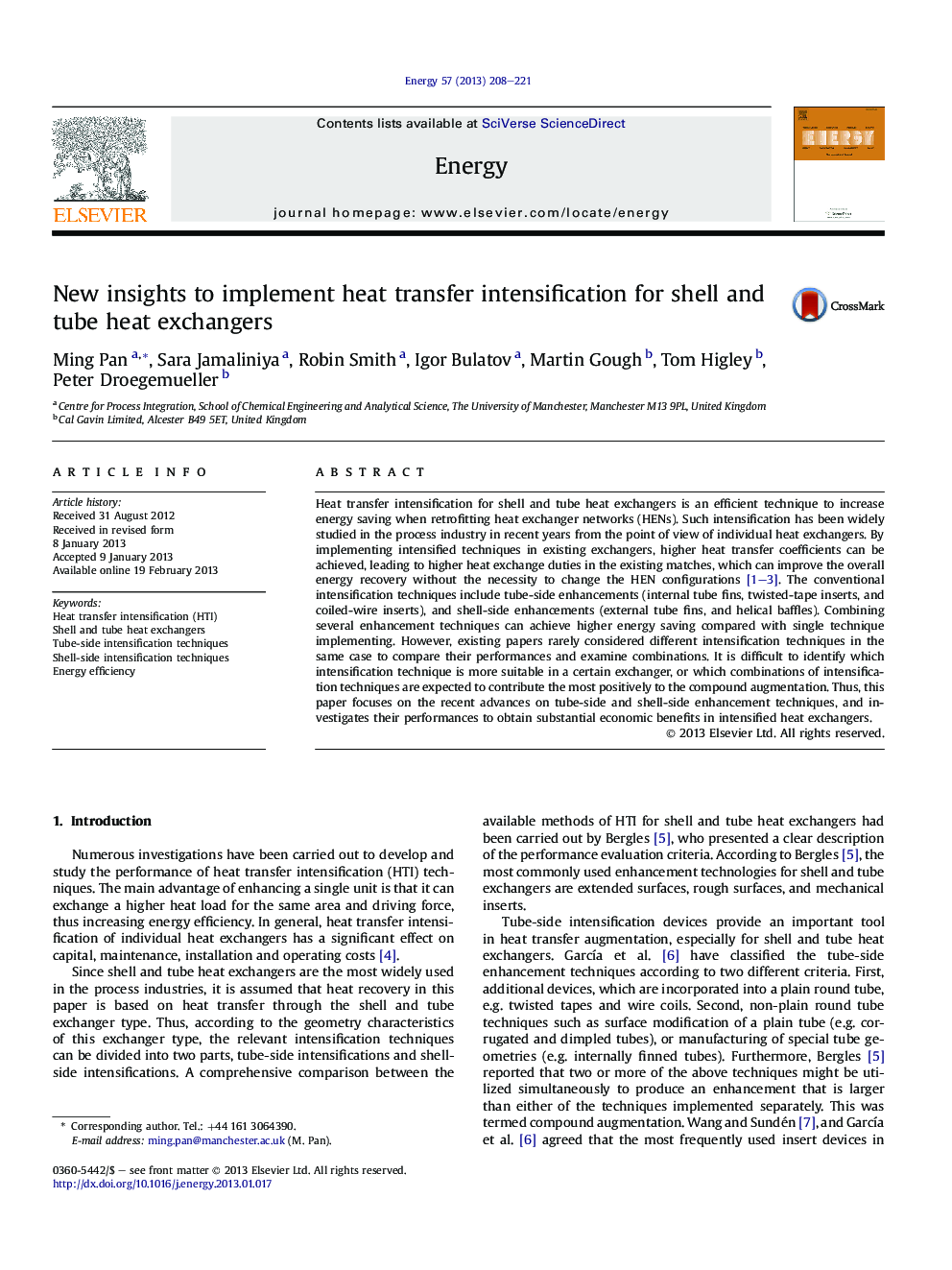| Article ID | Journal | Published Year | Pages | File Type |
|---|---|---|---|---|
| 1733064 | Energy | 2013 | 14 Pages |
Heat transfer intensification for shell and tube heat exchangers is an efficient technique to increase energy saving when retrofitting heat exchanger networks (HENs). Such intensification has been widely studied in the process industry in recent years from the point of view of individual heat exchangers. By implementing intensified techniques in existing exchangers, higher heat transfer coefficients can be achieved, leading to higher heat exchange duties in the existing matches, which can improve the overall energy recovery without the necessity to change the HEN configurations [1], [2] and [3]. The conventional intensification techniques include tube-side enhancements (internal tube fins, twisted-tape inserts, and coiled-wire inserts), and shell-side enhancements (external tube fins, and helical baffles). Combining several enhancement techniques can achieve higher energy saving compared with single technique implementing. However, existing papers rarely considered different intensification techniques in the same case to compare their performances and examine combinations. It is difficult to identify which intensification technique is more suitable in a certain exchanger, or which combinations of intensification techniques are expected to contribute the most positively to the compound augmentation. Thus, this paper focuses on the recent advances on tube-side and shell-side enhancement techniques, and investigates their performances to obtain substantial economic benefits in intensified heat exchangers.
► Combinations of intensification techniques are considered. ► Thermal and hydraulic calculations on the intensification combinations. ► Identify suitable intensification techniques to the best economic trade-offs. ► The compound augmentation of intensification techniques in 10 cases.
